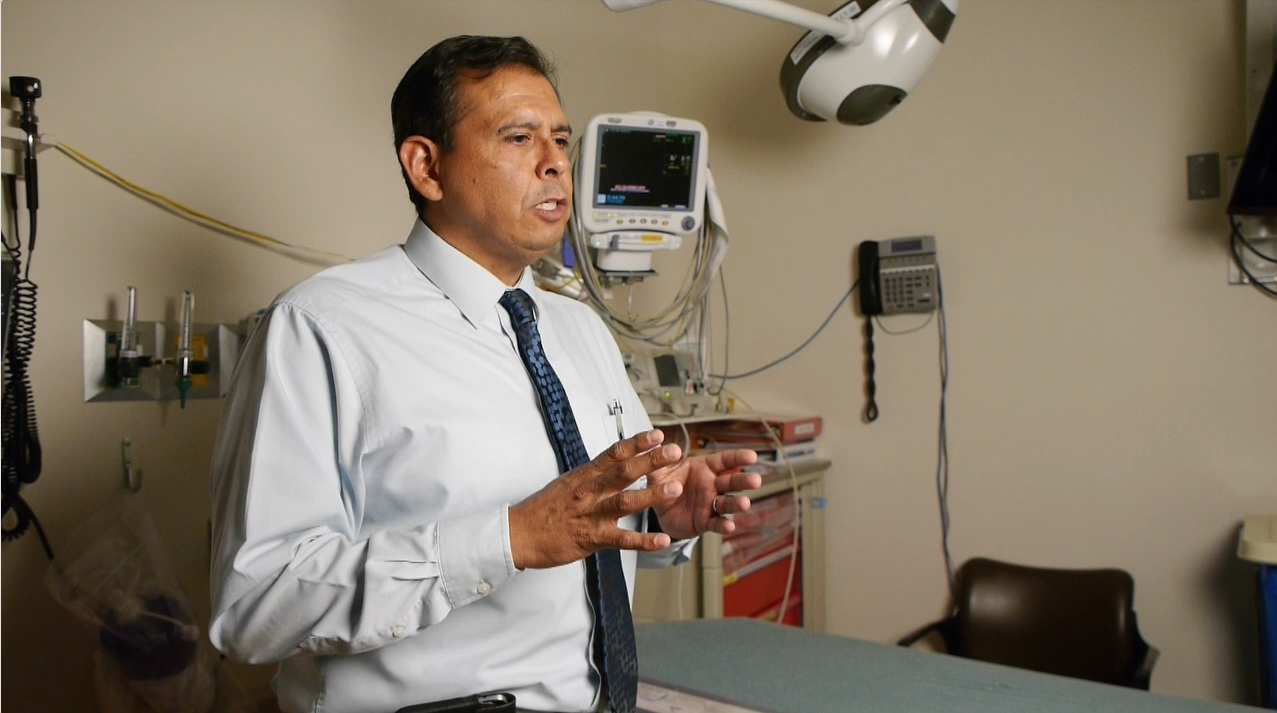Preparing for Disaster: UNM Hospital Participates in Region-Wide Emergency Training

New Tool Helps ER Doctors Decide When to Order a CT Scan for Suspected Cervical Spine Injury
Children seen in hospital emergency departments for possible cervical spine injuries often undergo computed tomography (CT) scans of the neck so doctors can better evaluate their status, but the imaging procedure exposes them to ionizing radiation, raising their risk for cancer.
University of New Mexico researchers participated in a large multi-site observational study that has led to the development of a new method to reliably assess when or whether a pediatric patient needs to undergo CT or X-ray imaging for a neck injury.
In a study published June 4 in The Lancet Child & Adolescent Health, researchers in the Pediatric Emergency Care Applied Research Network (PECARN) created a highly accurate cervical spine injury prediction rule. When applied, this tool decreases the use of CT by more than 50% without missing clinically significant injuries or increasing normal X-ray use.
The UNM Hospital pediatric emergency department was one of 18 pediatric ERs participating in the three-year study, which enrolled more than 22,000 children nationwide, said Robert Sapien, MD, MMM, professor and director of the UNM School of Medicine Division of Pediatric Emergency Medicine.
 “Although the study was performed in pediatric emergency departments in children’s hospitals, the vast majority of children who are ill or injured are actually not cared for in pediatric emergency departments – they’re cared for in community ERs,” Sapien said. “That’s where this is probably going to have its biggest impact, because it gives a prediction rule and some guidelines.”
“Although the study was performed in pediatric emergency departments in children’s hospitals, the vast majority of children who are ill or injured are actually not cared for in pediatric emergency departments – they’re cared for in community ERs,” Sapien said. “That’s where this is probably going to have its biggest impact, because it gives a prediction rule and some guidelines.”
Children evaluated in the study suffered neck injuries in myriad ways, including car crashes, falls, diving and sports activities, as well as in altercations or instances of suspected child abuse, researchers reported. In such cases, an accurate diagnosis is critical, because spinal cord injuries in the neck can cause paralysis and even death.
The resulting PECARN prediction rule is easy for physicians to use, relying solely on a child’s symptoms and a physical examination upon arrival in the emergency department. The prediction consists of nine clinical findings, four of which designate a child as “high-risk” for cervical spine injury and appropriate for initial screening with CT.
“If they have none of those risk factors there was literally zero risk of them having a neck injury,” Sapien said.
The study reported that more than eight million children are evaluated for potential spinal neck injury each year, yet fewer than 1% are actually found to have cervical spine injuries. However, many of those patients undergo CT scans, which can image both the spinal cord and neck vertebrae, to offer practitioners and patient families some assurance.
But the diagnostic procedure may cause more harm than good. Studies have shown that children who have undergone CT imaging have a 24% higher incidence of cancer in the first decade, compared with unexposed children. In addition, a single cervical spine CT scan during childhood increases the lifetime risk of thyroid cancer by 78%.
Sapien said the PECARN research network had previously published a study of the use of CT scanning in pediatric head injuries that led to the adoption of new rules for when CT scans should be ordered. An online assessment tool makes it easy for a practitioner to enter a few data points that yields a recommendation on whether imaging is recommended. This enables them to have an informed conversation with parents about whether further testing is warranted or not, he said.

Many times, the family is not so comfortable if I say, ‘I don’t think your child needs a CT or an X-ray.’ But if I have a prediction rule, it allows me to have that conversation.
“One study showed it decreased the rate in community ERs in head-injured children getting CTs down from 29 percent to 17 percent,” Sapien said. “I think this is going to do the same thing. Providers are going to have more information to have those conversations with the parents and the family. Many times, the family is not so comfortable if I say, ‘I don’t think your child needs a CT or an X-ray.’ But if I have a prediction rule, it allows me to have that conversation.”
The new approach also benefits physicians, Sapien said.
“It gives those providers support and hopefully relieves some of their anxiety,” he said. “If you’re not trained, even taking care of a sick or injured child is really scary for these providers sometimes. This gives them a tool to at least be more comfortable with that management. It helps the patient and it helps the providers as well.”
Sapien hailed the PECARN recommendations as an example of the effectiveness of large, multi-site studies.
“A lot of these conditions are so rare in children that there’s not a single ER that sees that many kids in order to be able to do accurate and valid scientific studies,” he said. “A research network like this allows you to enroll 22,000 kids across the country because you have all of these research sites doing exactly the same protocol on these kids. It’s really a very powerful tool.”